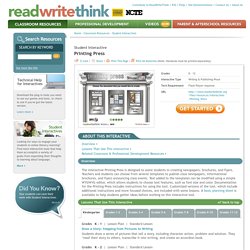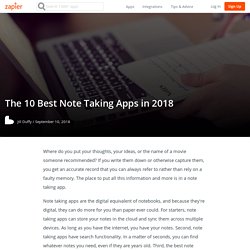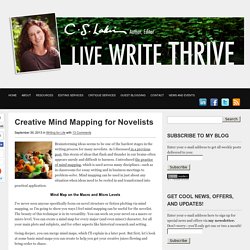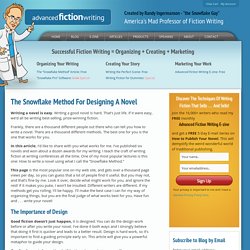

Printing Press. The interactive Printing Press is designed to assist students in creating newspapers, brochures, and flyers.

Teachers and students can choose from several templates to publish class newspapers, informational brochures, and flyers announcing class events. Text added to the templates can be modified using a simple WYSIWYG editor, which allows students to choose text features, such as font size and color. Documentation for the Printing Press includes instructions for using the tool. Customized versions of the tool, which include additional instructions and more focused choices, are included with some lessons.
A basic planning sheet is available to help students gather ideas before working on this interactive tool. Grades 3 – 12 | Student Interactive | Writing & Publishing Prose Flip Book The Flip Book is designed to allow users to type and illustrate tabbed flip books up to ten pages long. Grades K – 12 | Student Interactive | Writing & Publishing Prose Stapleless Book. 10 Great Tools for Creating eBooks. July 10, 2013 by Ronda Bowen Today, eBooks are popular tools for content marketers who want to get their message across to a wider audience.

Not only can offering a free eBook be helpful for building a mailing list of prospective customers and clients, but a well-crafted eBook can also demonstrate that you have the knowledge, resources, and skills your customer needs. There are a number of tools available to help individuals design professional-looking eBooks. We even have a guide here on Rock the Deadline with tips for creating an eBook in Microsoft Word. Story Generator. Evernote, OneNote, and Beyond: The 12 Best Note-Taking Apps. Where do you put your thoughts, your ideas, or the name of a movie someone recommended?

If you write them down or otherwise capture them, you get an accurate record that you can always refer to rather than rely on a faulty memory. The place to put all this information and more is in a note taking app. Note taking apps are the digital equivalent of notebooks, and because they're digital, they can do more for you than paper ever could. For starters, note taking apps can store your notes in the cloud and sync them across multiple devices. As long as you have the internet, you have your notes. Editor's Note: Originally published in October 2015 by author Jimmy Daly and then updated in April 2017, we've updated this post with new selections and app descriptions.
What Makes a Great Note Taking App? Creative Mind Mapping for Novelists. Brainstorming ideas seems to be one of the hardest stages in the writing process for many novelists.

As I discussed in a previous post, this storm of ideas that flash and thunder in our brains often appears unruly and difficult to harness. I introduced the practice of mind mapping, which is used across many disciplines—such as in classrooms for essay writing and in business meetings to problem-solve. Mind mapping can be used in just about any situation when ideas need to be reeled in and transformed into practical application. Mind Map on the Macro and Micro Levels I’ve never seen anyone specifically focus on novel structure or fiction plotting via mind mapping, so I’m going to show you ways I feel mind mapping can be useful for the novelist.
Printing Press. LitLift - FREE novel application. WRITING TOOLS. Character Pyramid Tool (PDF) Visualize your character’s FLAWS & associated behaviors (for a deeper understanding of this tool, please reference The Negative Trait Thesaurus: A Writer’s Guide to Character Flaws) Character Target Tool (PDF) Organize and group your character’s POSITIVE ATTRIBUTES by category: moral, achievement, interactive or identity (for a greater understanding of this tool, please reference The Positive Trait Thesaurus: A Writer’s Guide to Character Attributes) Character Profile Questionnaire (PDF) Not your average character questionnaire!

Reverse Backstory Tool (PDF) 750 Words - Write every day. Free Online Diary and Personal Journal. Anatomy for Artists. Write or Die 2. Inklewriter. How To Write A Novel Using The Snowflake Method. Writing a novel is easy.

Writing a good novel is hard. That’s just life. If it were easy, we’d all be writing best-selling, prize-winning fiction. Frankly, there are a thousand different people out there who can tell you how to write a novel. There are a thousand different methods. In this article, I’d like to share with you what works for me. This page is the most popular one on my web site, and gets over a thousand page views per day, so you can guess that a lot of people find it useful.
Good fiction doesn’t just happen, it is designed. For a number of years, I was a software architect designing large software projects. I claim that that’s how you design a novel — you start small, then build stuff up until it looks like a story. If you’re like most people, you spend a long time thinking about your novel before you ever start writing. But before you start writing, you need to get organized. Step 1) Take an hour and write a one-sentence summary of your novel. Shorter is better.